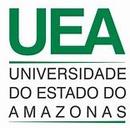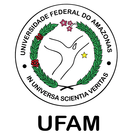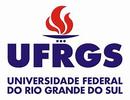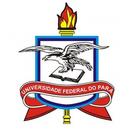Brazilian Partners
The project is based on a partnership with the Brazilian National Institutes of Science and Technology (INCT), in particular with the 6-year INCT ODISSEIA, coordinated by UnB and the Sustainable Development Center (CDS). It is supported by the FAP-DF, CNPq and CAPES. Link
Ambiente Social, it is a company engaged in consultancy of projects, research and activities in relation to the social-environmental field and dedicated to nature protection and the socio-economic development. It is used to work with CIRAD, and more recently with IRD. It has developed a large experience in participatory approaches and its presence in the consortium undoubtedly helps to the efficiency of the training sessions with stakeholders and managers.
The mission of the Empresa Brasileira de Pesquisa Agropecuária (EMBRAPA) is to provide feasible solutions for the sustainable development of Brazilian agribusiness through knowledge and technology generation and transfer. The main goal is to enable solutions of research, development and innovation for sustainable agriculture, agribusiness and forest and contribute to the conservation of natural capital to benefit society. The EMBRAPA has long collaborated with most of the European institutions involved in the ODYSSEA proposal. It interacted with IRD and the Brazilian Institute of SpatialnResearch (INPE) to produce the Terra-Class product to map the progress of land-cover and land-use in Amazonia. It is leading the “Sustainable Agriculture Network in the Amazon” project along with Lancaster University, which main objective is to characterize and monitor land use change in the Amazon region.
Fundação Oswaldo Cruz, the FIOCRUZ is collaborating with many institutions abroad as a collaborating centre of the World Health organization. It coordinates the Climate and Health observatory which offers an extensive database and a methodological framework for their analysis. It forges strong links with the IRD initially through the RELAIS (INCT-IRD) project that aims at exploring the effect of large scale landscape processes acting on the presence/absence and evolution of pathogens and vector-borne diseases through multi-scale and multidisciplinary approaches combining social sciences, epidemiology, parasitology/bacteriology/virology, ecology, medical entomology, genetics and environmental sciences.This partnership was reinforced through the association of the Climate and Health observatory with the LMI OCE.
Instituto Nacional de Pesquisas da Amazônia created in 1952 and implemented in 1954 - the National Institute for Amazonian Research (INPA) - over the years, has been conducting scientific studies of the physical environment and living conditions of the Amazon region to promote human well -being and social development regional -economic. Currently, the INPA is a world reference in Tropical Biology.
Universidade do Estado do Amazonas, the UEA/RHASA is a relatively recent laboratory, which is associated to the LMI-OCE, but its partnership with other countries is expanding rapidly. Joecila Silva Santos did is PhD with the supervision of SC from IRD, and since, she is developing an international collaboration network related to spatial observation of continental waters. With her team, she has pursued works on spatial hydrology and in particular produced the most extended altimetry database in the Amazon with more than 1500 control virtual gauges. Her team includes a PhD student which benefits from shared supervision with IRD.
Universidade Federal do Amazona The federal university of Amazonas (UFAM) has currently 18 faculties and institutes. Since 1998, its Center for Environmental Sciences hosts a PhD interdisciplinary Program in Environmental Sciences in collaboration with the CDS (UnB) and the INPA.
The Federal Rural University of Amazônia UFRA staff brings a strong expertise on soil and plant biodiversity.
The Universidade Federal do Rio Grande do Sul, UFRGS is a century-old educational institution nationally and internationally recognized. It is centered in Porto Alegre – the capital city of the State of Rio Grande do Sul – and it offers academic programs from all different fields of knowledge, for all stages of education, ranging from elementary to graduate school. The qualification of its faculty, composed mostly of master’s and doctorate degree holders, the continuous updating of the infra-structure of l aboratories and libraries, the increase to student assistance, as well as the prioritization of its national and international involvement are policies in constant development. The UFRGS staff is bringing a strong expertise on hydrological and ecological modelling within the ODYSSEA project.
Universidade de Brasilia, the UnB has a long partnership with European institutions, started with France in the eighties, with IRD and CIRAD, its collaborations have rapidly expanded to many others countries, in particular with the department of Geography of UIBK. UnB is associated to the SMART and PP-AL, and RAS networks and is co-PI of the LMI-OCE and participated to many bilateral projects. The UnB staff included in ODYSSEA team belongs to three institutes of the UnB and brings an extended knowledge on sustainable development issues through social and public policies analysis, environmental and environment and health issues.
The mission of UFPA is to produce, socialize and transform the knowledge in the Amazon region to educate citizens capable of promoting the construction of a sustainable society. NCADR-UFPA has been involved in cooperation with French institutions for more than 20 years now, with many projects dealing with the role of family farmers in amazonian territories. NCADR-UFPA is currently involved projects related to farmers’ innovations to reduce environmental impacts, such as a Brafagri program. PPGE-UFPA and NAEA-UFPA are involved in several projects on the adaptations of Amazonian Estuarine populations to climatic changes.
The School of Arts, Sciences and Humanities is one of the youngest schools within Universidade de São Paulo is involved in the DURAMAZ network and by this way, interacted with several of the ODYSSEA partners, in particular UR2, IRD, and UnB. Its staff brings a large expertise in the analysis and evaluation of environmental public policies. The group will contribute to WP4 activities under Neli de Mello’s lead.












